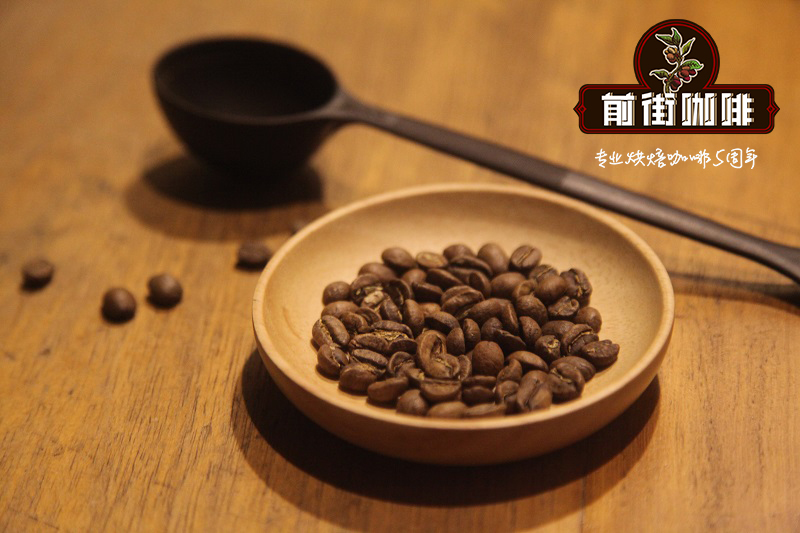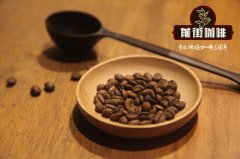A brief introduction to the characteristics of Arabica beans what kinds of Arabica beans explain the splendor of the world

Professional coffee knowledge exchange more coffee bean information please follow the coffee workshop (Wechat official account cafe_style)
Front Street-Arabica Coffee introduction
Arabica, cultivated on a slope with a height of 9-2000 meters, adapts to the stable temperature and rainfall in the tropical climate, with pleasant aroma and rich taste. Coffee beans are oval in shape, flat in shape, poor adaptability to the characteristic environment of tree species, need more manual care, and the price is high. The distribution areas are mainly in Central and South America, East Africa, Southeast Asia, Hawaii and so on.
Tibica (Typica)
This is the closest variety to the native species in Arabica, where almost all Arabica varieties come from. In the past, it was widely picked in Central and South America, with long beans and excellent aroma and sour taste, but it is not resistant to leaf rust. It requires a considerable number of shelter trees, resulting in low production (like bourbon, it can only be harvested every two years).
⊙ bourbon (Bourbon)
Tibica is the best second species closest to Arabica, while bourbon is the second species caused by Tibica mutation. The two are the oldest coffee varieties in existence, with Yemen transplanted to the east of Madagascar in East Africa, on the island of Bourbon in the Indian Ocean (now known as Reunion), and then into Brazil with French colonists. It is characterized by small and round beans, mostly dense and gregarious, so the central line is S-shaped.
⊙ Kaddura (Caturra)
This is a mutant found in Brazil with low tree height, small bean grains, high yield and resistance to leaf rust. The disadvantage is that it will only bear fruit in the coming year, and it can only be harvested once every two years. Although the quality is very high, the cost of care and fertilization is quite high. It is suitable for culturing in the middle and highlands with an altitude of 450 Mueller 1700 meters above sea level and an annual rainfall of 2500 Mueller 3500 mm. It is characterized by sour taste and slightly stronger astringency.
⊙ Mondo Norwood (Mundo Nove)
A natural hybrid of bourbon and Sumatra found in Brazil. With strong environmental adaptability and resistance to diseases and insect pests, it belongs to high-yield varieties, but the growth rate is slow and the bean grains are too large. The tree height of 3 meters is its disadvantage (this height has exceeded the height that the harvester can reach, so it is not suitable for the mechanization of coffee harvesting), the top branches and leaves of the coffee tree must be trimmed every year. It was planted in Brazil around 1950 and is now the main variety in Brazil along with Kaddura and Kaduai. Because of its well-balanced sour and bitter taste and a taste close to the original variety, Mondonovu was highly sought after as soon as it was launched, and named it "New World".
⊙ Kaduai (Catuai)
A hybrid of Mondo Novo and Kaddura. The yield is high and the environmental adaptability is strong, and the tree height is high (because the height of the Mondonovu tree makes it difficult to harvest, so it is crossed with the Kaddura of the tree height. Unlike Kaddura, Kaduai bears fruit every year, although it must be fully fertilized, but it is resistant to diseases and insect pests, and the fruit is not easy to fall in the face of strong wind and rain. However, its fruit growth and harvest life is only about ten years, and its weakness is that the life span is too short. It is mainly cultivated in the vast area from Colombia to Central America. The taste of Kaduai is more monotonous and less mellow than Montanovo.
In short: Qianjie is a coffee research hall, happy to share the knowledge about coffee with you, we share unreservedly just to make more friends fall in love with coffee, and there will be three low-discount coffee activities every month. The reason is that Qianjie wants to make more friends drink the best coffee at the lowest price, which has been Qianjie's tenet for 6 years!
END
Important Notice :
前街咖啡 FrontStreet Coffee has moved to new addredd:
FrontStreet Coffee Address: 315,Donghua East Road,GuangZhou
Tel:020 38364473
- Prev

How to choose Yunnan small Coffee? how about Yunnan Baoshan small Coffee? the place where the giants compete
Professional coffee knowledge exchange more coffee bean information please follow the coffee workshop (Wechat official account cafe_style) Qianjie-Yunnan Baoshan Coffee introduction Coffee comes from the Greek Kaweh, meaning strength and enthusiasm. In the West, drinking coffee has long been an indispensable element and social means in life. There is a place in southwest China where people love coffee more than the west.
- Next

What are the characteristics of Arabica coffee beans? are Arabica coffee beans black coffee?
Professional coffee knowledge exchange more coffee bean information please follow the coffee workshop (Wechat official account cafe_style) front street-Arabica coffee introduction Arabica-appearance characteristics Arabica species of larger shrubs, oval leaves, dark green, fruit is oval, wild plants are usually 9-12 meters tall, branches scattered. Leaves opposite, elliptic or long ovate, 6-12 long
Related
- Beginners will see the "Coffee pull flower" guide!
- What is the difference between ice blog purified milk and ordinary milk coffee?
- Why is the Philippines the largest producer of crops in Liberia?
- For coffee extraction, should the fine powder be retained?
- How does extracted espresso fill pressed powder? How much strength does it take to press the powder?
- How to make jasmine cold extract coffee? Is the jasmine + latte good?
- Will this little toy really make the coffee taste better? How does Lily Drip affect coffee extraction?
- Will the action of slapping the filter cup also affect coffee extraction?
- What's the difference between powder-to-water ratio and powder-to-liquid ratio?
- What is the Ethiopian local species? What does it have to do with Heirloom native species?

